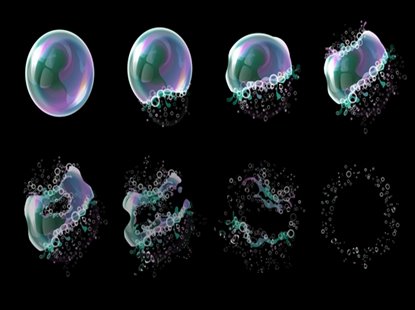Defoamers and Their Impact on Reducing Foam in Liquid Systems
Defoamers and Their Impact on Reducing Foam in Liquid Systems
Blog Article
The Role of Defoamers in Enhancing Item Quality and Performance
Defoamers serve as necessary additives that mitigate this problem, guaranteeing smoother production operations while boosting the practical and visual features of the final products. The choice of the ideal defoamer can be critical to achieving optimum outcomes, increasing important inquiries concerning formula compatibility and efficiency metrics that warrant additional expedition.
Comprehending Defoamers
Comprehending the role of defoamers is crucial for preserving item high quality across numerous markets. Defoamers are chemical additives designed to avoid the formation and reduce of foam in liquid systems, which can detrimentally impact procedures such as mixing, loading, and surface stress. Lathering can result in inefficiencies, item issues, and jeopardized visual charm, making defoamers an important element in making procedures.
In industrial applications, defoamers assist to enhance product consistency and stability. As an example, in the paint and coverings industry, foam can disrupt the application procedure and the final coating. Likewise, in food and beverage production, extreme foam can prevent bottling and packaging effectiveness (defoamers). The reliable usage of defoamers not only makes certain smoother manufacturing processes but additionally contributes to premium product performance.
Furthermore, the option and formula of a defoamer must line up with specific application requirements, such as compatibility with various other components, performance under varying temperature and pH conditions, and prospective governing restrictions. Inevitably, understanding defoamers' features and their significance in numerous formulations is vital for optimizing production and guaranteeing the finest quality end products.
Kinds of Defoamers
Defoamers can be classified into several types based on their make-up and mechanism of action. The main kinds include silicone-based, non-silicone natural, and inorganic defoamers.
Silicone-based defoamers are among the most efficient, mainly as a result of their ability to spread rapidly on the fluid surface and interfere with foam development. Their unique chemical structure enables superior security, making them appropriate for high-temperature applications and settings with differing pH degrees.
Non-silicone organic defoamers, frequently composed of natural oils or fatty acids, are valued for their biodegradability and reduced toxicity. These are normally made use of in food and drink applications where security and environmental effect are critical.
Inorganic defoamers, that include materials like talc or calcium carbonate, act by boosting the density of the fluid, consequently lowering foam stability. They are usually used in commercial procedures where compatibility with other materials is not a worry.
Each sort of defoamer has unique benefits and constraints, permitting for customized options depending upon the specific foaming issues encountered in numerous applications. Comprehending these differences is essential for optimizing performance and attaining preferred item top quality.
Applications Throughout Industries
Various industries utilize defoamers to boost item quality and functional effectiveness. In the food and beverage field, defoamers are critical in processes such as developing and dairy products manufacturing to avoid foam development, which can result in inefficiencies and item disparity. By managing foam, manufacturers can make certain much better yield and a more uniform item.
In the pharmaceutical industry, defoamers play a crucial role in the solution of liquid drugs, where extreme foam can hamper mixing and exact dosing. Their use aids preserve the integrity of the solutions and helps with smoother manufacturing processes.
The paint and finishes market additionally counts on defoamers to enhance the efficiency of items during application. By decreasing foam, these additives make sure a smoother coating and enhance the visual qualities of the final item.

Benefits of Utilizing Defoamers
While the application of defoamers differs throughout sectors, their advantages continually enhance item top quality and procedure effectiveness. One considerable benefit is the decrease of foam development during manufacturing procedures, which can otherwise lead to production delays and disparities in product top quality. By reducing foam, defoamers enable a smoother flow of products, assisting in a lot more reliable operations and lowering the chance of devices malfunctions.
Furthermore, using defoamers can enhance the appearance and texture of end products. In sectors such as layers, paints, and food handling, extreme foam can compromise the visual aesthetic appeals and overall high quality, while the ideal defoamer application makes certain an uniform coating and desirable features. Defoamers can add to set you back financial savings by lowering waste throughout manufacturing and optimizing the use of raw materials.

Selecting the Right Defoamer
Picking the ideal defoamer is vital for enhancing production procedures and making sure product top quality. The option of defoamer influences not just the effectiveness of foam control but additionally the overall performance features of the last product. Factors to take into consideration consist of the kind of application, the chemistry of the solution, and the environmental problems under which the item will certainly be used.
Different markets may call for particular defoamer kinds, such as silicone-based, organic, or polymeric defoamers. Recognizing the compatibility of the defoamer with the primary active ingredients is vital to avoid damaging responses that could jeopardize item honesty. Furthermore, the defoamer's performance in various temperatures and pH degrees should be reviewed to guarantee consistent efficiency.
Examining the defoamer in small applications can give beneficial understandings into its efficiency and viability. Factor to consider of regulative compliance, particularly in food, pharmaceuticals, and cosmetics, is extremely important in picking a defoamer. Inevitably, a detailed evaluation of these elements will result in the option of a defoamer that not only manages foam effectively but additionally enhances the quality and performance of the end product.
Final Thought

In conclusion, defoamers are essential additives that significantly enhance product quality and performance across various sectors. The calculated option and application of defoamers lead to set you back savings, maximized source use, and increased client contentment.
Frothing can lead to inadequacies, product flaws, and jeopardized aesthetic charm, making defoamers a critical part in manufacturing procedures.

Report this page